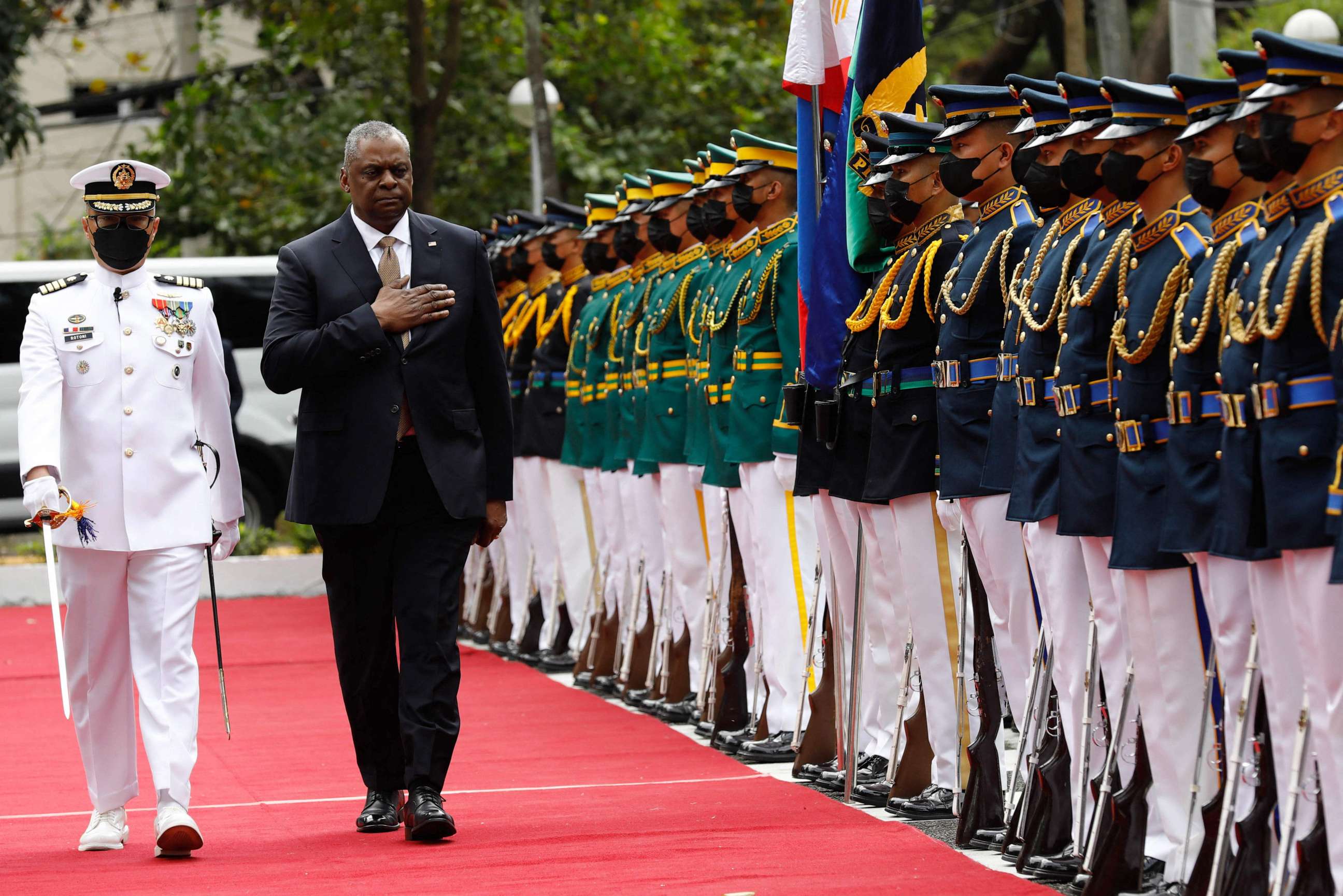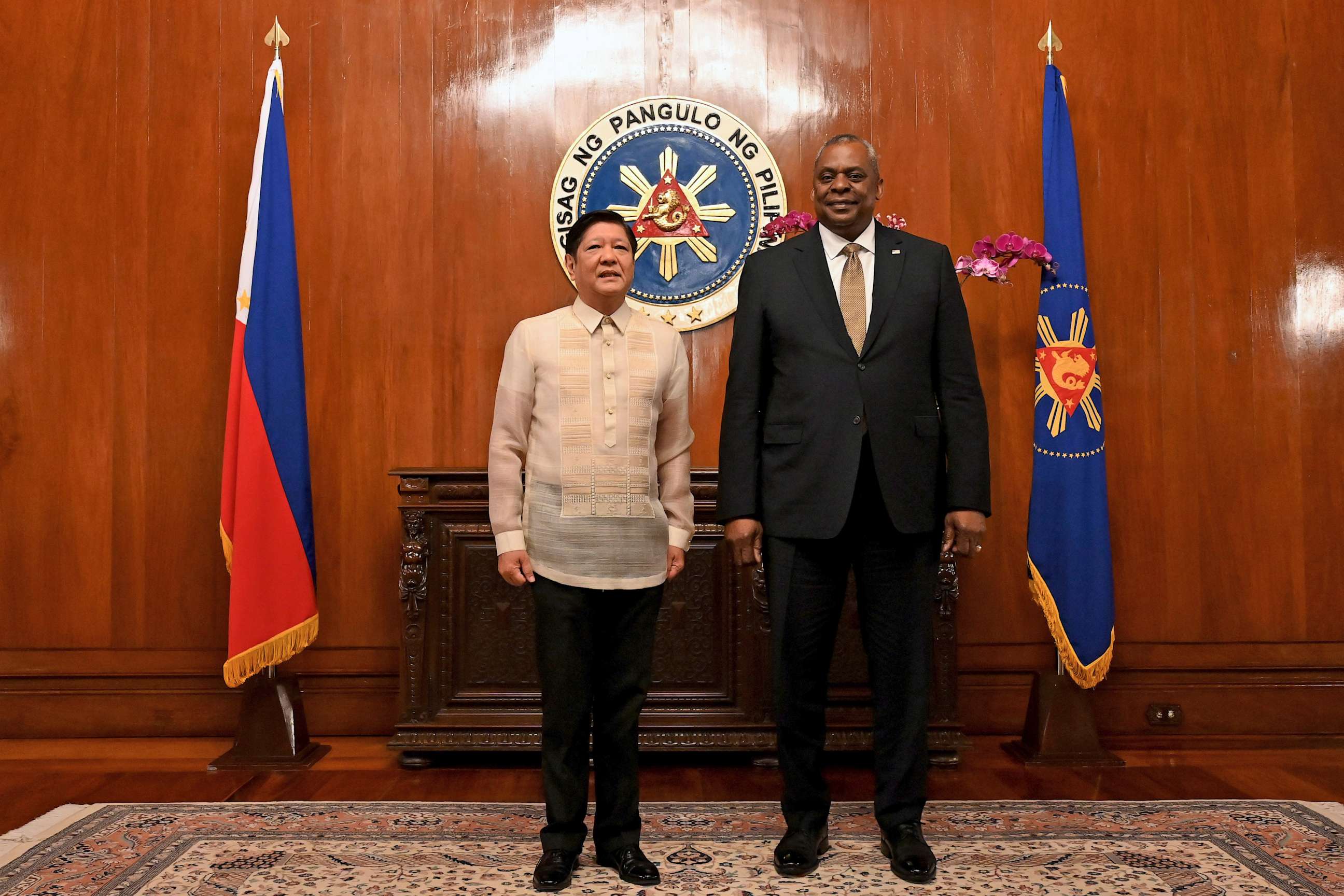With an eye on China, US building up military in the Philippines
The deal is prompted by concerns about China's ambitions in the Pacific.
Seeking to deter China's ambitions in the western Pacific, the U.S. and the Philippines have reached an agreement that will give the U.S. military access to four additional bases in the Philippines.
The agreement is the latest sign that both countries are reestablishing their military cooperation as concerns continue about China's claims in the South China Sea and their stated intent to reclaim Taiwan, which it considers to be a breakaway province.
"That's just part of our efforts to modernize our alliance, and these efforts are especially important as the People's Republic of China continues to advance its illegitimate claims in the West Philippine Sea" Defense Secretary Lloyd Austin told reporters during a visit to Manila, where the new deal was announced.

The new deal means that the U.S. military will now have access to nine Philippine military bases under the 2014 Enhanced Defense Cooperation Agreement where they can construct new facilities, preposition equipment and rotate troops for training purposes.
The locations of the four additional bases that will be accessible to U.S. military personnel have not yet been finalized and were not not disclosed under the agreement.
But there has been speculation that some are located on the northern island of Luzon, where Manila is located. At its northernmost tip, the island is about 200 miles from Taiwan.
The U.S. military has focused its attention on redirecting its military presence and priority to the Pacific where China is seen by the Pentagon as its "pacing challenge" in the region.

Of mutual concern to the U.S. and the Philippines are China's increasingly aggressive military exercises around Taiwan and its territorial claims in the South China Sea over the past decade, most notably in 2012 when China seized Scarborough Shoal from the Philippines.
Those concerns about China's ambitions in the region spurred renewed military contacts between the U.S. and the Philippines that led to the Enhanced Defense Cooperation Agreement in 2014 that granted U.S. access to five Philippine military bases.
The Philippines used to be home to large U.S. military bases including Subic Bay Naval Base and Clark Air Force Base, but those facilities were closed in the early 1990s.
Currently, the U.S. has no permanent presence and about 500 military personnel rotate regularly into the country for training.
While both countries have a long-standing military alliance, the U.S. military relationship with the Philippines deteriorated under former Philippine President Rodrigo Duterte who courted China.
That relationship has improved since President Ferdinand Marcos Jr. took over in mid-2022.
Austin stressed on Thursday that the new agreement allowing access to four more bases does not mean that the U.S. is permanently stationing forces in the Philippines.
"It's about providing access that allows us to increase our training opportunities with our partners, our allies here," he told reporters in Manila. "It's about having the ability to respond in a more effective fashion as we're faced -- as we're collectively faced with humanitarian assistance issues or natural -- or disaster response issues."
"This is an opportunity to increase our effectiveness, increase interoperability. It is not about permanent basing," he said.
"But it is a big deal. It's a really big deal, in that, you know, it provides us the opportunity, again, to interact a bit more in an effective way," he added.
.




